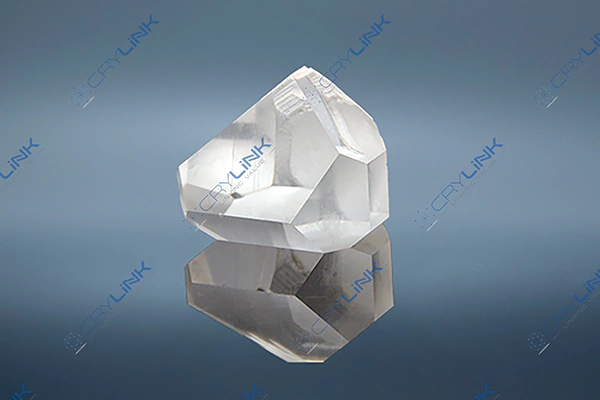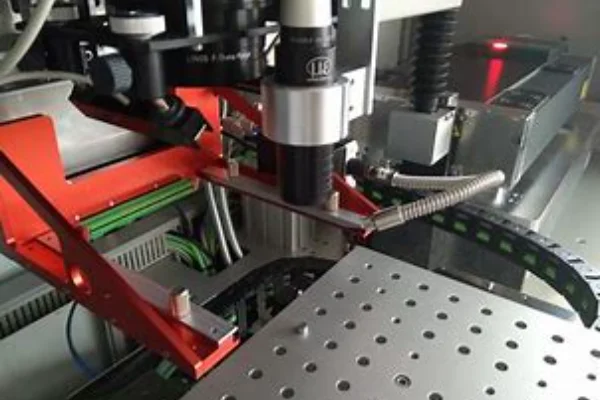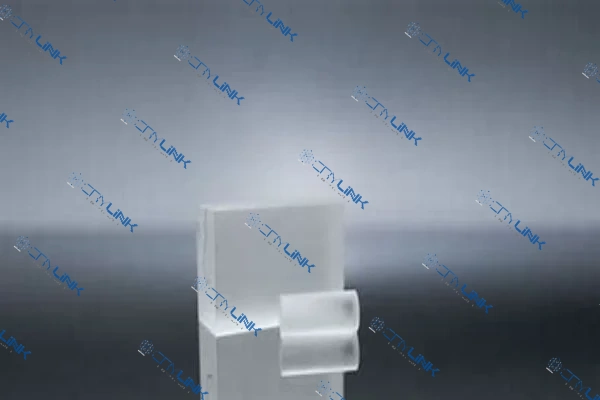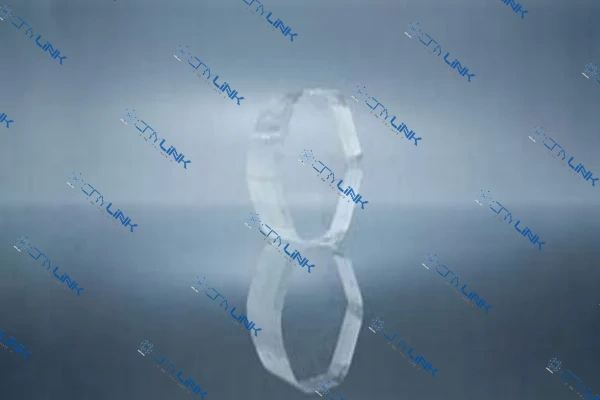
Nonlinear crystals play a critical function in ultrafast optics, especially in the generation of ultrashort laser pulses and frequency comb spectroscopy. These products enable us to control and manipulate light in remarkable methods, opening avenues for developments in numerous fields.
Femtosecond lasers have actually had a considerable influence on science and market, from telecommunications to medication. The function of nonlinear crystals beforehand femtosecond laser technology can not be overstated. The control of light these crystals use has actually opened brand-new possibilities in applications requiring ultrafast, accurate laser technology.

Figure 1. Femtosecond Lasers production
Nonlinear microscopy stands as a major recipient of nonlinear crystal innovations. The method makes it possible for scientists and clinicians to peer into the biological world with extraordinary accuracy and detail, all thanks to the ultrashort laser pulses created by nonlinear crystals.
The power of nonlinear microscopy depends on its ability to check out biological tissues in three dimensions and at great depths. The high peak powers of ultrashort laser pulses from nonlinear crystals allow multi-photon excitation, which significantly decreases light scattering and permits clear imaging of deeper tissue layers. This uses a noninvasive window into the living organism, changing fields such as neurobiology and cancer research.
Nonlinear crystals have actually likewise enabled the development of super-resolution nonlinear microscopy methods. These make the most of the nonlinear action of the crystals to provide laser pulses that are focused in time, which considerably enhances imaging resolution. Such precision uses new insights into cellular and molecular procedures, helping our understanding of complex biological systems.
In the world of time-resolved spectroscopy, nonlinear crystals have actually produced a sea change. They have enabled the research study of dynamic processes in the atomic and molecular world by assisting to deal with spectral modifications in real-time.
Through the generation of ultrashort laser pulses, nonlinear crystals allow scientists to track ultrafast procedures, such as chemical reactions or electronic transitions, on their natural timescales. This uses fresh insights into these busy processes and help the style of new products and technologies.
Nonlinear crystals, through frequency blending processes, boost the spectral resolution in time-resolved spectroscopy. This capability to study various spectral components with high resolution results in a better understanding of complex systems, sustaining developments in fields such as photochemistry and photobiology.
Nonlinear crystals hold a vital function in the realm of ultrafast optics. They stand as the crucial elements in manipulating the properties of laser light. Two of the primary applications where these crystals play an important role include the generation of ultrashort laser pulses and frequency comb spectroscopy.
The heart of ultrafast optics depends on the generation of ultrashort laser pulses, especially femtosecond pulses. These are incredibly short light pulses, lasting only a quadrillionth of a second. The capability to develop such brief pulses has actually transformed our understanding of ultrafast phenomena, and it would not have been possible without nonlinear crystals.
When extreme laser pulses pass through a nonlinear crystal, their spectral bandwidth can be broadened through a procedure called self-phase modulation. This expanded spectrum can then be recompressed to produce an even shorter pulse. Thus, nonlinear crystals serve as a critical tool in the tool kit of ultrafast laser pulse generation.
Another groundbreaking innovation in which nonlinear crystals play an essential role is frequency comb spectroscopy. A frequency comb is a spectrum that consists of a series of discrete, equally spaced frequency lines, similar to the teeth of a comb. Frequency combs are the cornerstone of accuracy measurements of light frequencies.
Nonlinear crystals are basic to frequency comb generation. When a brief pulse of laser light travels through a nonlinear crystal, the crystal creates brand-new frequencies of light through a procedure called second harmonic generation. By adjusting the stages of these created frequencies, a supercontinuum of light can be produced, which forms the basis of a frequency comb.Beta-Barium Borate (BBO) and Lithium Triborate (LBO) Nonlinear Crystals in Ultrafast Applications
In the diverse range of nonlinear crystals, Beta-Barium Borate (BBO) and Lithium Triborate (LBO) crystals stand out due to their extraordinary residential or commercial properties and effectiveness in ultrafast applications.
BBO crystals are a few of the most popular nonlinear crystals in ultrafast optics. They are birefringent, suggesting they refract light in a different way depending on the polarization and propagation direction of the light.
This birefringence permits us to use BBO crystals for applications such as 2nd harmonic generation, which involves converting a laser beam into light at double the frequency. BBO’s broad transparency range and high damage threshold make it particularly ideal for high-power ultrafast applications.
Moreover, BBO crystals show outstanding thermal and physical homes. Their low absorption at high power and high resistance to optical damage are especially useful when dealing with ultrafast high-intensity laser beams.

Figrue 2. BBO Crystals
Like BBO crystals, LBO crystals are another essential player in the field of ultrafast optics. These crystals are acknowledged for their broad openness, high damage threshold, and efficient nonlinear optical coefficients, which are critical in frequency conversion procedures.
One substantial benefit of LBO crystals is their low absorption coefficient, which decreases thermal lensing impacts. This residential or commercial property is particularly useful in high-power laser systems, where thermal results can be detrimental. In addition, LBO crystals are advantageous for their wider approval angle and smaller sized walk-off angle, enabling efficient interaction with the laser beam and lessening beam distortion.

Figure 3. LBO Crystals
Nonlinear crystals have significantly affected different aspects of optics, especially in the advancement of femtosecond lasers, nonlinear microscopy, and time-resolved spectroscopy.
Femtosecond lasers, which generate ultrashort pulses of light, have reinvented fields varying from materials processing to medication. Nonlinear crystals play a crucial function in these lasers. They permit the conversion of laser wavelengths, broadening of pulse spectra, and compression of pulses to the femtosecond routine. This enables severe precision and decreases heat damage, necessary in applications like eye surgery or precision cutting.
Nonlinear microscopy, a strategy that allows high-resolution, three-dimensional imaging of biological tissues, owes much of its developments to nonlinear crystals. These crystals help create high-intensity, ultrashort light pulses needed in two-photon and three-photon excitation microscopy. This causes greater imaging depth and minimizes photodamage in living samples, supplying an unequaled view into the microcosmos of life.
Time-resolved spectroscopy, an effective technique utilized to study the vibrant modifications in atomic and molecular systems, relies greatly on the capabilities of nonlinear crystals.
In time-resolved spectroscopy, every information matters. The method depends upon the ability to deliver ultrashort pulses of light that can ‘freeze’ the quick motions of electrons and atomic nuclei. Here, nonlinear crystals play an essential role by enabling the generation and manipulation of these ultrashort laser pulses.
The ultrashort pulses, usually in the femtosecond range, enable researchers to capture incredibly fast events in real time, successfully creating a ‘movie’ of the dynamic procedure. Nonlinear crystals contribute to this by expanding the spectrum of laser pulses, which can then be compressed to shorter periods, thus enabling the investigation of faster procedures.
In addition, nonlinear crystals permit frequency mixing processes, such as sum-frequency generation. This capability can be utilized to extend the spectral series of time-resolved studies, offering high-resolution spectral info. This is especially essential when studying complex systems, where comprehensive knowledge of various spectral elements is necessary.
The advances in time-resolved spectroscopy allowed by nonlinear crystals have broad implications. They bridge the space between basic research study and real-world applications. For instance, in the development of novel materials, understanding ultrafast dynamics can supply crucial insights into their properties. Likewise, in biochemistry, it can clarify quick procedures like protein folding.
As we have actually seen, nonlinear crystals are crucial in ultrafast optics, specifically ahead of time femtosecond laser innovation. Through their use in the generation of ultrashort laser pulses, frequency comb spectroscopy, and various applications like nonlinear microscopy and time-resolved spectroscopy, these crystals have really revolutionized laser technology.
What is the function of nonlinear crystals in ultrafast optics?
Nonlinear crystals are key in the generation of ultrashort laser pulses and frequency comb spectroscopy in the field of ultrafast optics.
What are the advantages of Beta-Barium Borate (BBO) and Lithium Triborate (LBO) crystals in ultrafast applications?
Both BBO and LBO crystals have broad openness ranges, high damage thresholds, and are efficient in frequency conversion procedures, making them perfect for high-power laser applications.
How do nonlinear crystals contribute to femtosecond laser technology?
Nonlinear crystals allow to produce femtosecond pulses, incredibly quick pulses of light that change areas requiring ultrafast, exact laser innovation.
How has nonlinear crystal innovation advanced nonlinear microscopy?
Nonlinear crystal innovation has boosted nonlinear microscopy by allowing the generation of ultrashort laser pulses, enhancing imaging resolution, and depth penetration.
How do nonlinear crystals effect time-resolved spectroscopy?
Nonlinear crystals help with the study of vibrant procedures at the atomic and molecular levels in real-time by fixing spectral changes, boosting the effectiveness of time-resolved spectroscopy.